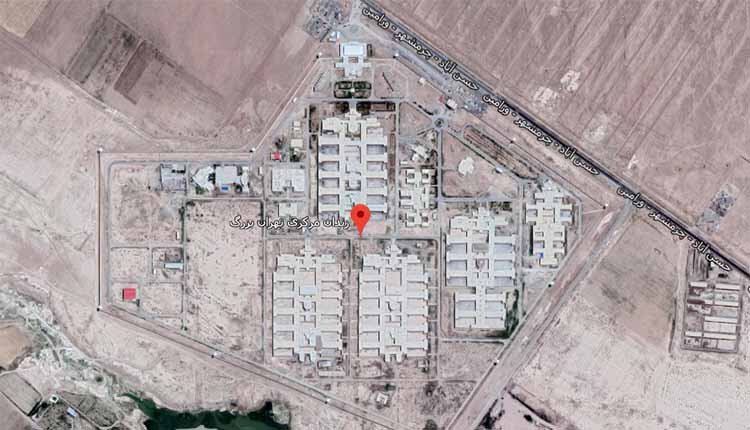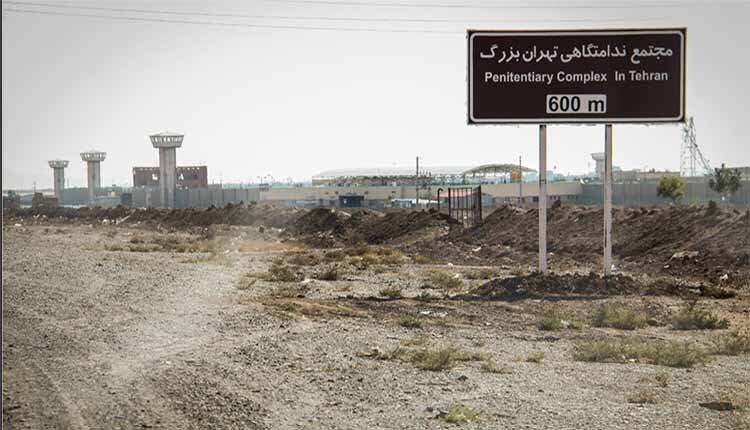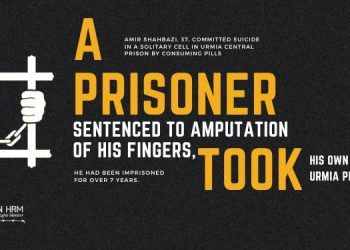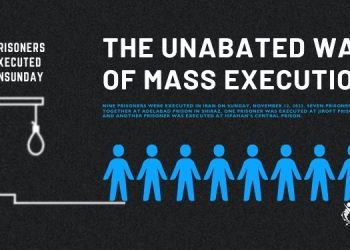On August 21, 2018, Nader Fatourechi, a writer, and reporter affiliated with the factions in the Iranian regime was arrested in another row of internal feuds between groups of power and connections among the establishment.
He spent four days in the quarantine section of Fashafuyeh Prison and after his release, wrote a portrait about the situation of the inmates imprisoned there, calling their conditions “inhumane.”
Fatourechi was arrested after exposing some of the jobbery that had happened in the “Teachers’ Reserve Fund.” According to his account, he was released after his father provided the bail money.
Below is what he wrote about the Fashafuyeh Prison (the Greater Tehran Penitentiary).
Despite the judge’s emphasis that I should be transferred to Evin Prison, I was transferred to Fashafuyeh Prison. It’s hard to believe that they ask for a “fare” from prisoners (if they can afford it). The fare for Evin was 15,000 tomans (about $3.50) while the fare for Fashafuyeh was 100,000 tomans (about $24) so, obviously, I was taken to Fashafuyeh.
Whatever the circumstances, I had the chance to see the conditions in the quarantines section of the “addicts’ prison” from up close.
The quarantine section was, as everyone called it, “hell”.
The accused, convict, transferee, and any other prisoners spent four days in the quarantine and were then transferred to the “Brigade”.
The difference in living standards between the “Brigade” and the “quarantine” was almost similar to the difference between the conditions of a restroom and a bedroom.
As someone who has experienced quarantine conditions three times in the past during the 90’s 2000’s and the 2010’s, I can safely testify to the “deterioration” of quarantine conditions in Fashafuyeh Prison.
In the four days of quarantine, prisoners, regardless of the reason for their detention, are deprived of tasteless drinking water, ventilation, toilets, cigarettes and digestible foods.
As Fashafuyeh Prison was originally designed for drug-addicted prisoners with little mobility, it lacks a public restroom. The toilet consists of a hole in the ground in an area of about 60 by 60 cm without a water hose, sink or lights, which is separated from the beds with a curtain in a 3 by the 3-meter room where 26 to 32 prisoners are packed on top of each other. These cells are called “physics”.
The conditions of the “physics” are so inhumane that even in the quarantine, it’s known as the “place of exile”.
In the physics, there are three bunk beds and two blankets on the ground. The two upper windows have no glass and there is no cooling or heating system. The water is cut off from 4:00 pm to 7:00 am every day. A 100-watt fluorescent bulb lights the room and if it burns out, according to prisoners, is unlikely to be replaced.
In the quarantine cells, there is an unofficial hierarchical system, in which the “window beds” (beds next to the windows) belong to the oldest or roughest prisoners (prisoners with long prison terms, major drug dealers, thugs, those who pick fights and major robbers) while the normal beds which do not have a view of the windows belong to small-time dealers, pickpockets, and robbers with lighter cases. The ground belongs to drug addicts, Afghans, and newcomers.
The reason behind the population density of the cells is due to the incredible number of “newcomers” that come into the prison on a daily basis. Almost every 24 hours, more than 40 new prisoners are brought to the quarantine, while only 10 prisoners leave quarantine every day.
The experience of “ground sleepers” who sleep under the beds and are usually Afghan and drug addicts, is something like being in a coffin.
Due to the lack of space, they are placed under the beds, and after which usually, three other prisoners lean on their backs to the beds and therefore obstruct the flow of air. Those who sleep under the beds have limitations in moving or breathing and therefore these people are called “grave dwellers”.
The putrid smell in the cells, caused by sweat and infectious sores, is unbelievable. Because intravenous drug users or shoot up addicts are usually experiencing a drug comedown, they cannot go to the so-called washroom area to wash and therefore are the cause of the putrid smell in the cells.
More than 80% of prisoners in the quarantine are shoot-up addicts and homeless addicts who can’t even stand up and instead of being jailed should be taken to the hospital.
In the entire quarantine, there is only one prison guard who is from the government and the rest of the prison administration, such as reception, services, cooking, night shifts, prisoner transfers and even the medical clinic is run by prisoners themselves.
Except for one officer, a (Muslim) cleric charged with cultural affairs and an aid worker make up the official prison personnel. Their existence has no relevance for the prisoners.
The unofficial, autonomous prison system has a hierarchy. The section speaker and supervisors are usually financial prisoners who have been charged with fraud and embezzlement. These prisoners are usually given facilities in prison including beds of their own, phones and freedom of movement inside the section. They have cigarettes and wear their own slippers and even have socks on. The night supervisors are next in line in the hierarchy. They are also usually charged with financial crimes. In third place are those that work in reception, services, and the kitchen. They are usually charged with robbery and have been in the “Brigade” for less than two weeks.
There is an abundance of educated people in the prison, who are usually charged with financial crimes. In light of my personal experience in the past decades, the number of educated people has extraordinarily increased and this is a sociological phenomenon that can be the subject of an urgent study.
The (top prisoners’) aggressive, hot-tempered behavior and looking down on newcomers is very prevalent but since prison is controlled by prisoners themselves, the prisoners charged with running Fashafuyeh treat their peers somewhat appropriately. Though they sometimes welcome newcomers with yells and even kicks and punches.
Addicts, those charged with robbery, “the dirties”, and Afghans are literally treated like animals and livestock at the beginning.
Fashafuyeh is a prison for political and non-political prisoners and usually does not have any media attention and human rights activists protesting the conditions.
Attention to the social and welfare conditions of “ordinary” non-political prisoners in Fashafuyeh is a matter of urgency. Their rights have been trampled on and they have no backers. They are under inhumane conditions and are experiencing conditions that are unbearable even for a day. Without a doubt, they are experiencing an irreparable damage to their body and soul.
The words “Greater Tehran Penitentiary” welcomes you when you enter the prison grounds. This is while the physical and psychological pressures on the prisoners are so severe that it deprives the individual of the power of thought and basically does not give him the opportunity to contemplate and repent.
Another part of the “misery of Fashafuyeh” is related to what goes on outside of prison. The prisoners’ families sit in the desert areas outside, and no one, including the few officers on duty, gives them any information on whether their loved ones are in prison. This becomes important with the knowledge that most prisoners are from poverty-stricken families, who take taxis to get to prison. Taxi fares are 100 to 150 tomans ($24 – $36).
In prison, I saw people who had been in prison for more than four days but were not still able to use “the two-minute free call right”. This puts costs of up to several thousand tomans on their families’ hands.
August 22, 2018












